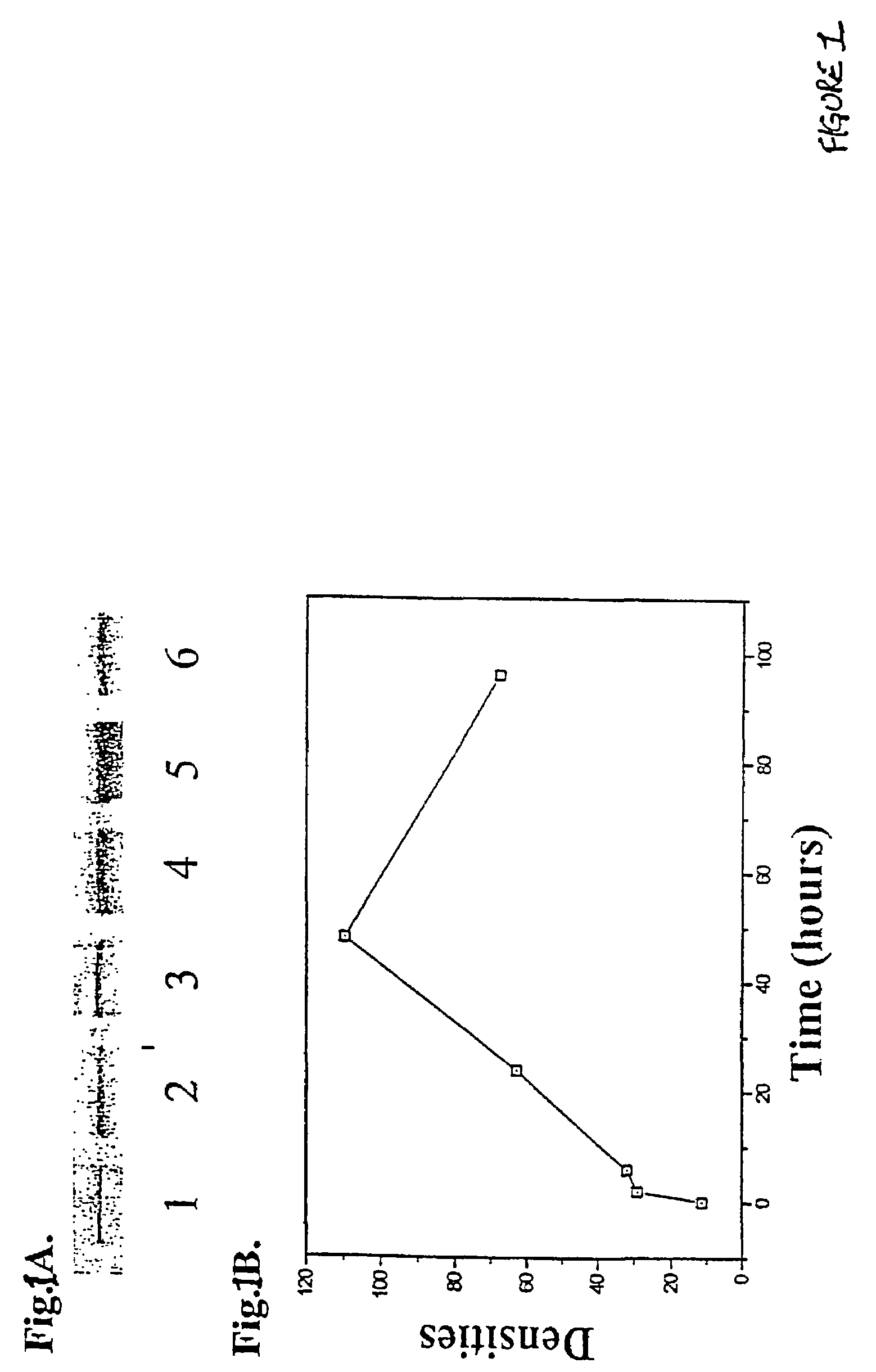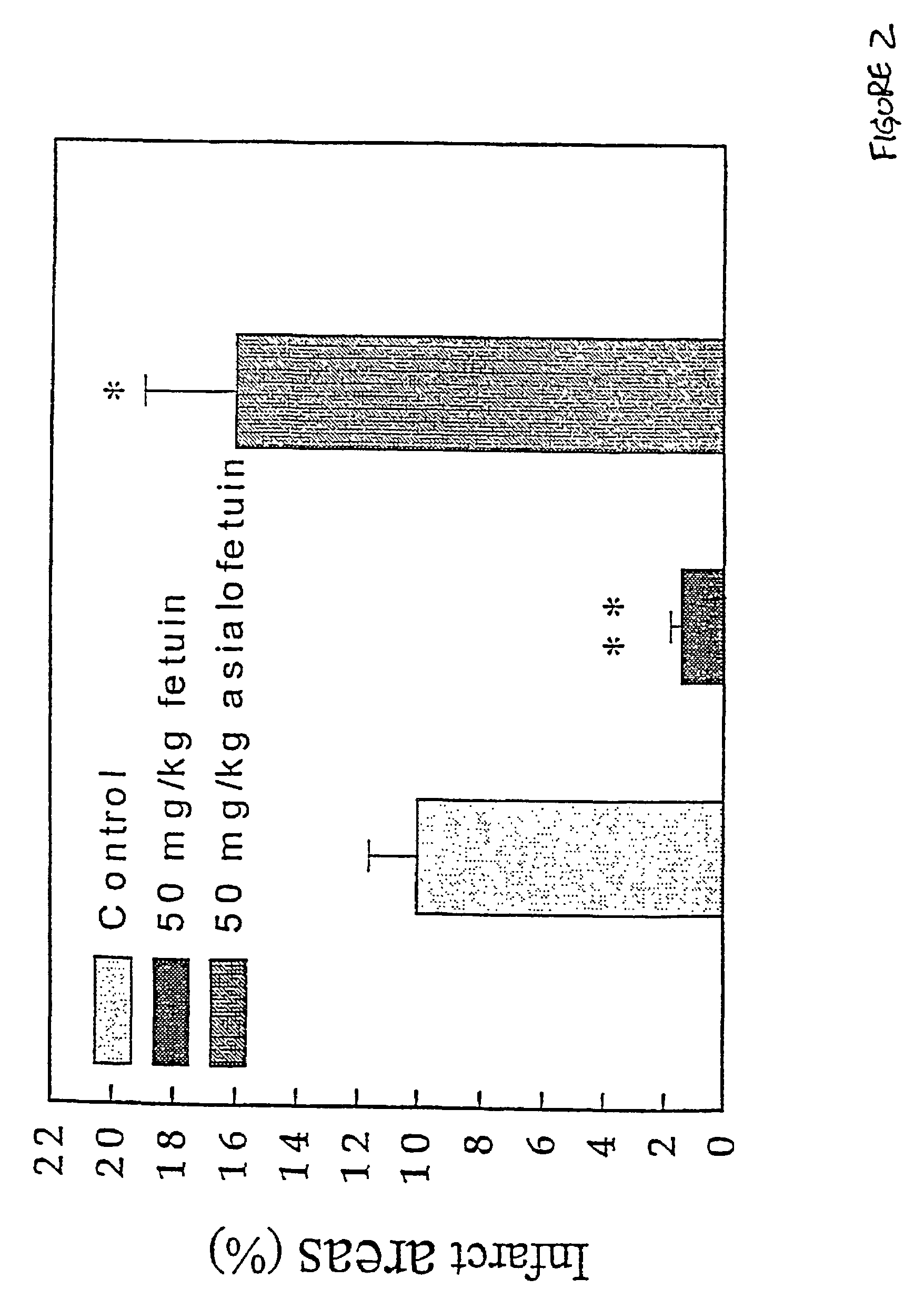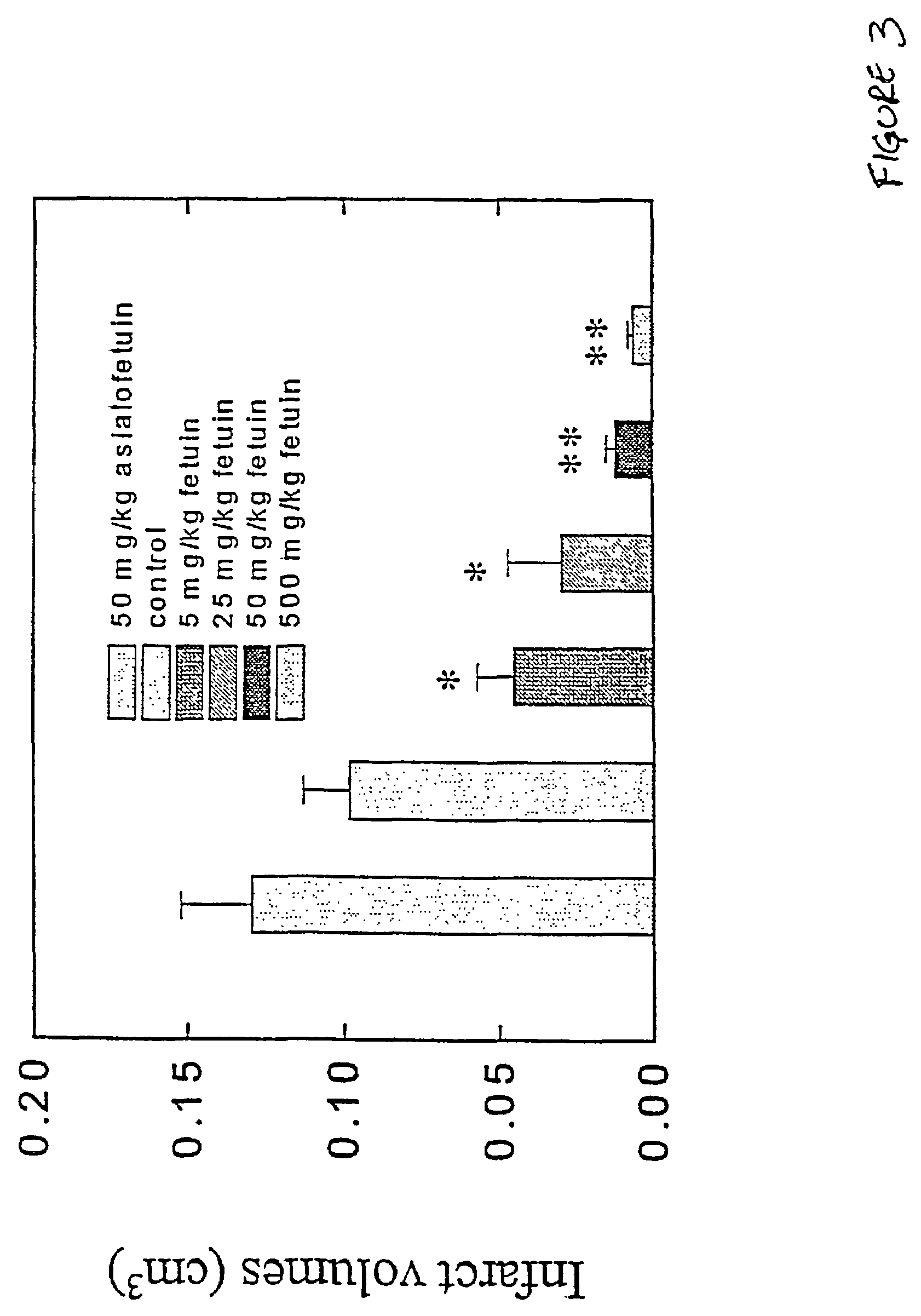Prevention of brain damage in stroke
a stroke and brain technology, applied in the field of pharmaceutical composition, can solve the problems of limited treatment options, additional therapeutic modalities, and limited treatment options
- Summary
- Abstract
- Description
- Claims
- Application Information
AI Technical Summary
Benefits of technology
Problems solved by technology
Method used
Image
Examples
example 1
Appearance of α2-HS in Stroke
[0016]We first sought to assess the appearance of α2-HS in ischemic areas of brain, relative to its appearance in the normally perfused brain. A widely used model for human stroke is achieved by permanently occluding the middle cerebral artery in rats, and subsequently measuring the volume of the resultant cortical brain damage after 24 hours. The resulting infarction in this model is highly reproducible and provides a reasonable model of the typical brain damage that occurs in the setting of human focal cerebral ischemia or stroke. Moreover, the clinical efficacy of experimental therapeutics can be conveniently assessed in this model because quantitative volumetric estimates of brain damage can be made, allowing direct comparison between various cerebroprotective strategies and agents. Moreover, therapeutic modalities identified to mitigate against ischemic tissue damage in this model can be directly extended to other tissue ischemias, such as heart att...
example 2
Effects of α2-HS Treatment on Stroke Damage
[0019]Since ischemic brain is known to contain elevated levels of polyamines, and since α2-HS is known to enhance the anti-inflammatory properties of spermine (U.S. Ser. No. 08 / 932,871, incorporated herein in its entirety), we sought to assess the therapeutic benefit of α2-HS treatment in stroke. As shown in FIG. 2, rats subjected to experimental focal cerebral ischemic challenge suffered smaller infarcts if they were treated intravenously with α2-HS at 50 mg / kg than if they were untreated. Under these conditions, treatment with asialofetuin exacerbated stroke damage. This brain damage-ameliorating effect of α2-HS treatment is predictive of a therapeutic benefit in response to α2-HS treatment in the context of human stroke or cerebrovascular accident, and in other conditions of ischemic tissue damage (e.g., heart attack).
example 3
Inhibition of Brain Damage by α2-HS Treatment is Dose-Dependent
[0020]To determine the dose-dependency of α2-HS treatment to prevent tissue damage in the setting of ischemia, we examined various doses of α2-HS for efficacy in a stroke model involving focal cerebral ischemia. Stroke was induced and animals treated as described above, and α2-HS was administered 15 minutes after the onset of ischemia at a dose of 5, 25, 50 or 500 mg / kg. As shown in FIG. 3, α2-HS improved the outcome of stroke at all doses tested, with doses of 50 or 500 mg / kg providing the most significant benefits. This example shows how therapeutically effective dose ranges are initially estimated. Final determination of effective dosages for specific clinical conditions such as stroke or heart attack is readily accomplished by those skilled in the medical and pharmaceutical arts by reference to these pre-clinical results in experimentally induced tissue ischemia.
PUM
 Login to View More
Login to View More Abstract
Description
Claims
Application Information
 Login to View More
Login to View More - R&D
- Intellectual Property
- Life Sciences
- Materials
- Tech Scout
- Unparalleled Data Quality
- Higher Quality Content
- 60% Fewer Hallucinations
Browse by: Latest US Patents, China's latest patents, Technical Efficacy Thesaurus, Application Domain, Technology Topic, Popular Technical Reports.
© 2025 PatSnap. All rights reserved.Legal|Privacy policy|Modern Slavery Act Transparency Statement|Sitemap|About US| Contact US: help@patsnap.com



